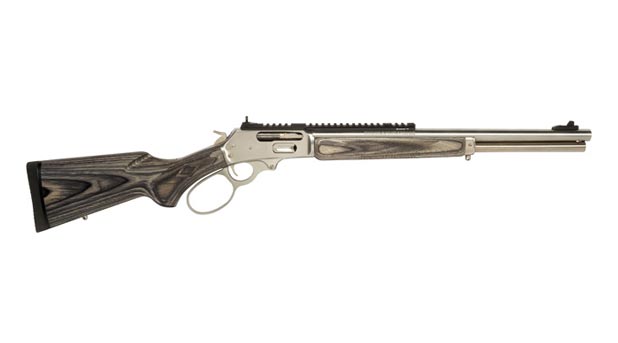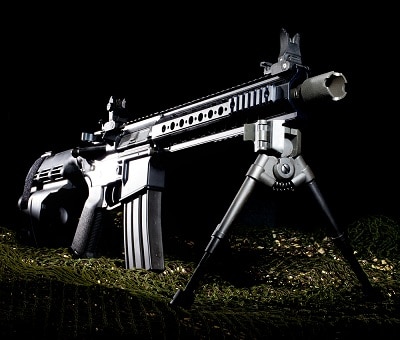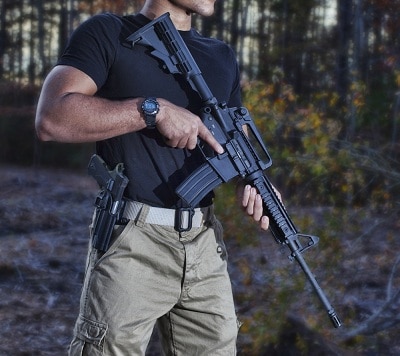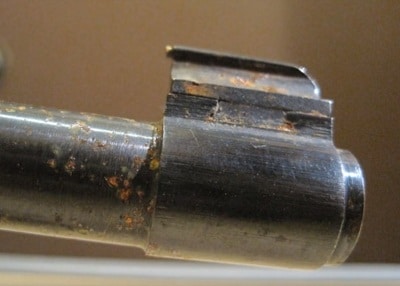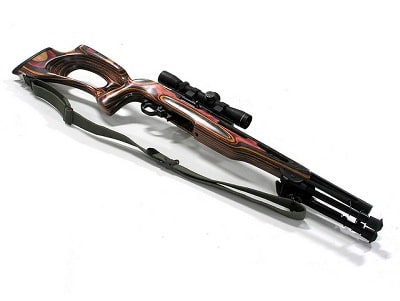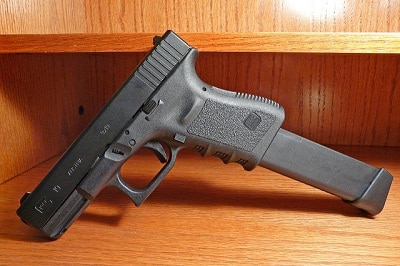When you are building an AR-15, one of the most important aspects of the build is the barrel. So, which is the best AR-15 barrel on the market?
Trying to decide which one is right for you? Look no further. In this article, we will go over our top five choices for AR-15 barrels. We will also talk about the different types of barrels, and what each should be used for.
Obviously, the most feature of any barrel is the accuracy.
If your rifle doesn’t shoot accurately, what point does it serve?
High quality barrels can go a long way in increasing the accuracy of the rifle.
Other features to keep in mind are the durability and the size. Certain metals will be more durable than others due to their chemical composition. A more durable barrel will last longer on your AR-15 build.
Specifically, the material the barrel is made out of can greatly increase the weapon’s accuracy.
If you don't have time, you can quickly check here:
Unlimited Guide About Choosing A Best Barrel For Your AR-15
Barrel Materials
There are two main barrel compositions:
- Chromoly Steel
- Stainless Steel
Chromoly steel is an alloy. Barrels made from this material are the most inexpensive and are fairly accurate, but will not last as long.
Stainless steel barrels are more accurate by a comfortable margin. They will also last a little longer, because they are more resistant to corrosion. However, they are slightly more expensive and are heavier.
From there, some barrels are given either a chrome lining or nitride treatment.
Chrome lined barrels will last longer, but will decrease the accuracy.
The chrome lining will preserve the barrel and prevent corrosion even further. However, as the lining wears off, the accuracy of the barrel will be negatively affected. Nitride treated barrels will also last for a long time, but without the decrease in accuracy.
As far as the size is concerned, keep in mind the barrel length requirements in the United States (assuming that is where you are purchasing from).
If your barrel is shorter than 16 inches, your rifle will be considered a short barreled rifle, commonly referred to as an SBR. These weapons are covered under the National Firearms Act, and will require a tax stamp from the ATF. However, for our list, we will focus on 16 inch barrels.
Recommendations
For Competitive Shooting
If you are looking to do competitive shooting that requires extreme accuracy, stainless steel will be the best barrel for you.
The increased accuracy will be the most important for this type of shooting. Avoid chrome lining for competitive shooting, as the accuracy will degrade over time.
For Hunter
For hunting, accuracy is less important.
Especially if you will be hunting in a humid area or in the rain, resistance to corrosion is going to be crucial for this type of shooting.
The most important aspect of the barrel for this type shooting will be to ensure that the barrel is treated somehow, either with a chrome lining or a nitride treatment.
Both chromoly steel and stainless steel are resistant to the elements, so the treatment becomes the most important part for a hunting rifle. A hunter should have best AR-15 bipod to hold your AR.
For Casual Shooter
If you are just a casual shooter, it is dependent on how much you shoot.
If you shoot thousands of rounds per year, you probably are going to want a chrome lined barrel. It will last longer for you.
If you don’t shoot that much and clean your rifle adequately, any barrel choice will work for you. In this situation, we would recommend a stainless steel barrel due to the increased accuracy.
Top Our Pick For the Best AR-15 Barrel
1.
Daniel Defense 16” 5.56MM, Carbine 7
First on our list of best AR-15 barrel options is this 16 inch cold hammer forged barrel that is made of chrome moly vanadium.
The fact that the barrel is cold hammer forged creates an excellent barrel. It has a 1:7 twist rate, weighs 1.75 pounds, and has a chrome liner on the inside of the barrel.
The pros of this barrel are the durability and reliability. These features come mostly from the chrome lining and the phosphate exterior finish. Despite the fact that this is a chromoly barrel, the chrome lining will increase the durability. The reliability is backed by Daniel Defense’s warranty to protect against any material defects.
The cons of this barrel are the price and accuracy. This is the most expensive barrel on the list. While this is the most accurate chromoly barrel, stainless steel barrels will still be more accurate.
2.
Modern Armory 16” Lightweight Stainless Steel Barrel
Next up is this lightweight stainless steel barrel from Modern Armory. This barrel has a 1:7 twist rate and weighs 1.25 pounds. Since it is stainless steel, this is the best AR-15 barrel for accuracy shooting.
The pros of this barrel are the light weight, accuracy, feed ramps, and the lifetime guarantee. The fact that this barrel is so lightweight gives you the pros of a stainless steel barrel without the primary con. The accuracy of this barrel is unquestioned; Modern Armory guarantees 1 MOA accuracy at 100 yards when it is used properly. Another great feature is the feed ramp, which will help to ensure a round is smoothly chambered each time. The barrel is also available at an excellent price.
As far as cons, the gas block and gas tube aren’t included in the base price, but are still relatively inexpensive.
3.
Bear Creek Arsenal 16” Black Nitride 4150 Steel Contour Barrel
Next up is another 16 inch chromoly steel barrel. The barrel has a nitride finish for increased strength and durability. This barrel weighs 2 pounds and has a 1:8 twist rate.
The pros of this barrel are the durability, feed ramp, and price. Due to the nitride finish, this is an extremely durable barrel, and the accuracy will not be as negatively affected. Bear Creek Arsenal expects sub 1 MOA accuracy from this barrel. It is also available at an excellent price.
The cons of this barrel are the weight. As you can see, this is a heavier barrel, so that is something to keep in mind. Another potential con of this barrel is the overall quality. The previous chromoly barrel was cold hammer forged, which increases the quality. However, Bear Creek Arsenal barrels are individually inspected to guarantee their quality.
4.
Anderson Manufacturing .223 Wylde 16” Lightweight Barrel
This 16 inch chromoly steel barrel weighs 1.5 pounds and has a 1:8 twist rate. The barrel has a parkerized finish, similar to what the military M4 barrels have. It is the most affordable on our list, and is the best AR-15 barrel for the basic build.
The pros of this barrel are the price and weight. Don’t let the price fool you, Anderson Manufacturing is well known for their quality, and this barrel is no different. However, this price is available at an extremely affordable price. The weight of this barrel is one of the lowest as well, so it would work well for a lightweight build.
The cons of this barrel are the durability. Due to the fact that there is no chrome lining or nitride treatment, this barrel will not be as durable as some of the others.
5.
Rock River Arms Chrome Lined 16” CAR Lightweight Barrel Assembly
This barrel from Rock River Arms is a chromoly steel barrel with a chrome lining. The twist rate is 1:9, and the weight is over 2 pounds, although that weight does include a bayonet lug, barrel nut, handguard cap, and the front sight post. Without those parts, this barrel would be close in weight to most of the others on the list.
The pros of this weapon are the durability. Due to the fact that the bore and chamber are chrome lined, this rifle will last thousands and thousands of rounds of ammunition.
The cons of this barrel are the price and accuracy. This is among the most expensive barrels on our list. As previously talked about, accuracy is negatively affected when a barrel is chrome lined.
Conclusion
As you can see, there are plenty of different features and factors to consider when looking into buying a barrel for an AR-15 build.
When looking to purchase, keep in mind the accuracy you require, how much you plan to shoot, and how much you would like to spend.
Also keep in mind any local laws about minimum barrel lengths.
While it is by no means an all-encompassing list, we hope that our list of best AR-15 barrels has at least pointed you in the right direction.
